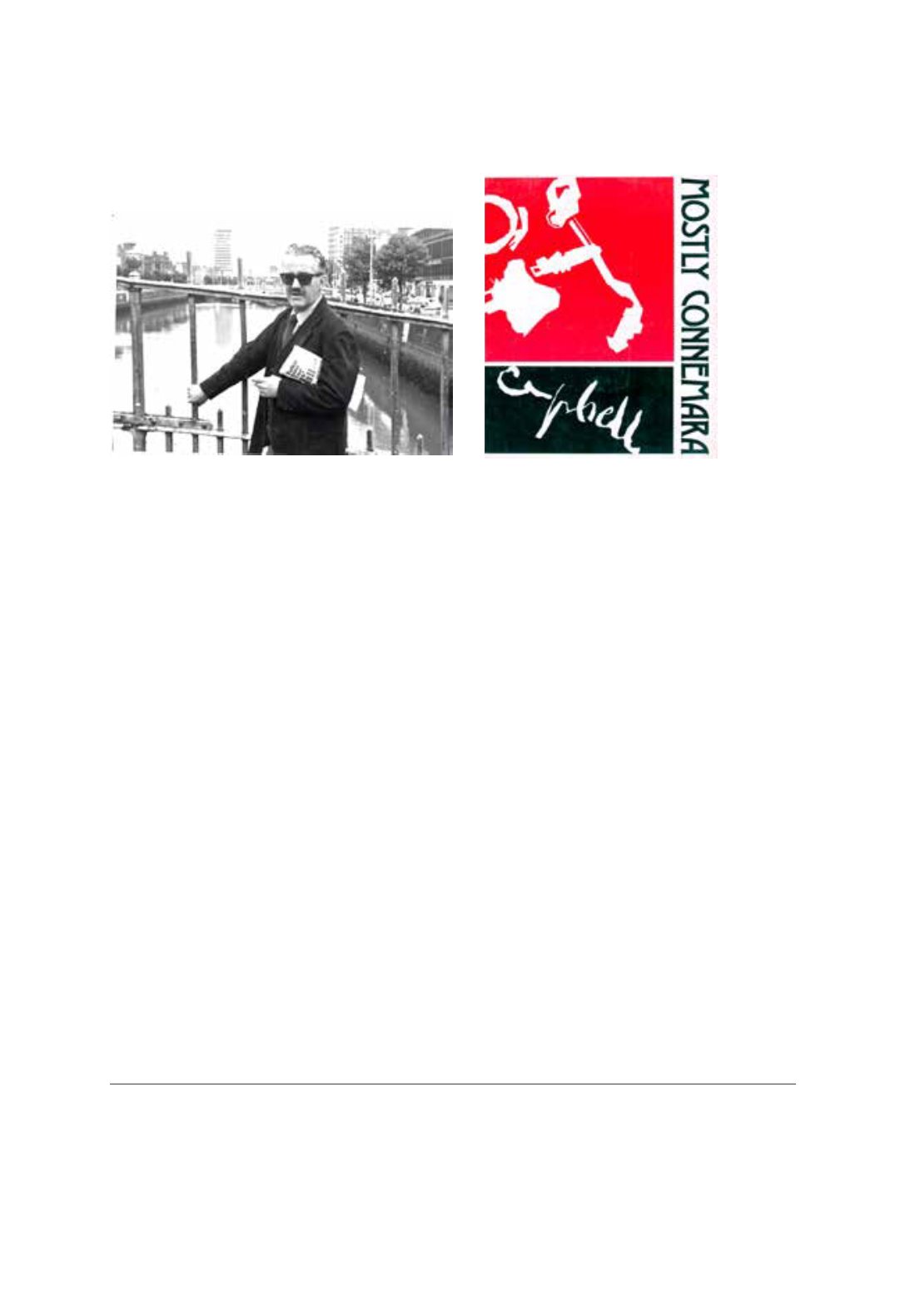

148
Campbell regularly reminded people that he was born in Arklow, but his early years in Belfast
formed his Northern personality and his friends considered him a Northern painter. His
awareness in Belfast in the 1940s that artists exhibiting alone would receive little recognition
propelled him into organizing exhibitions, which attracted publicity
214
and helped artists’
careers. He ‘never forgot that it was in Dublin the group were given their first major
recognition by people actually buying paintings’.
215
His initiative to ask renowned writers
216
from the 1950s to write forewords in his catalogues attracted further publicity.
As Campbell’s interests were running contrary to the dramatic changes in the visual arts,
his subjects appeared out of date alongside minimalist and conceptual art in the 1970s. In
discussion with Robert Ballagh on the subject of the visual art changes in the late 1960s and
1970s, Ballagh noted that Campbell’s work wasn’t out of date, but was ‘out of step’ with the
trends of the day, which he claimed ‘wasn’t unique to Campbell’.
217
214
The media referred to the group of painters as ‘The Ulster Group’, ‘The Northern Painters’ and ‘The Belfast
Painters’.
215
Editorial column by Douglas Gageby, ‘George Campbell’,
The Irish Times
, 19 May 1979, p. 13. Campbell
stayed with the Gageby’s at their rented cottage, Inishmor, Aran in the mid-1960s.
216
James White, Eric Newton, Michael MacLiammoir, Kenneth Jamison, Benedict Kiely and Brian Quinn.
217
Conversation with Robert Ballagh, 24 November 2014.
fig.242: George Campbell by the Liffey, Dublin, 1960’s
fig.243: Front cover ‘Mostly Connemara’, 1977
(designed by George Campbell)



















